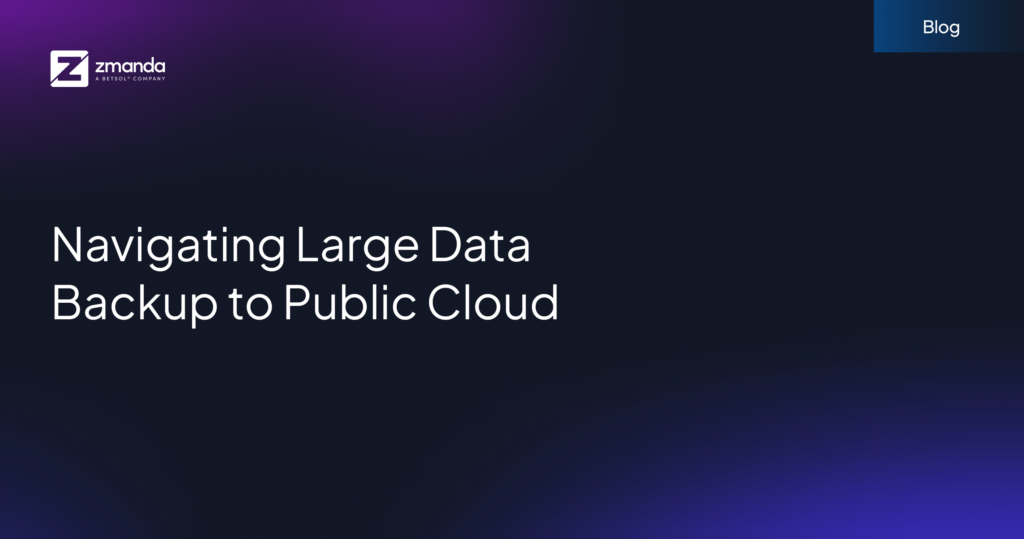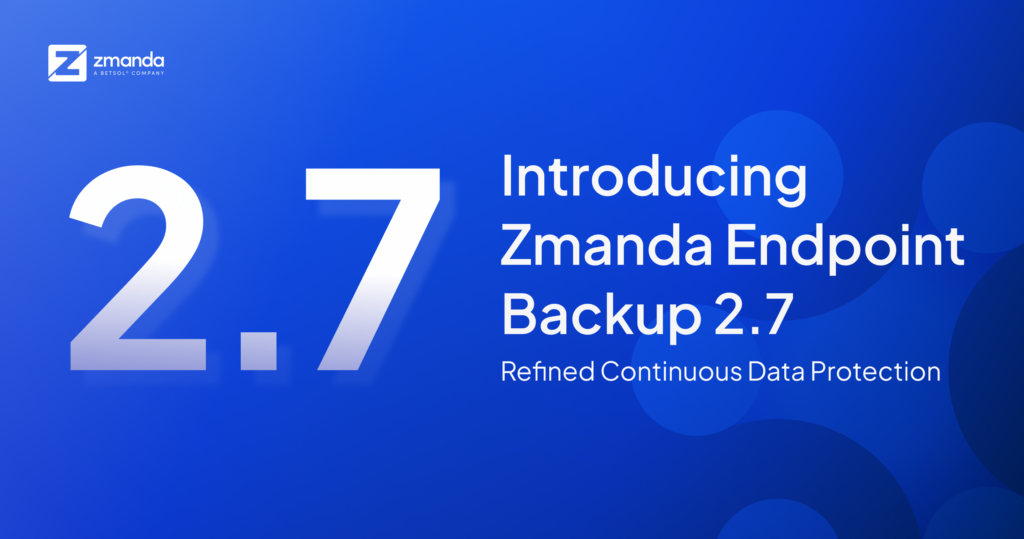
What do businesses use as a leverage point to mint revenue and profits? It’s DATA. Companies now use advanced data analytics to launch their innovative products and services in the market, improve operations, or to make better decisions based on correct information. In short, data is the “HEARTBEAT” for businesses. So it is understandable why they go to great extents to protect it from corruption or loss. This is where robust backup and disaster recovery (DR) strategies come into play.
Historically, companies adopted traditional data protection solutions, but with the tremendous growth of data, the ability to effectively safeguard it and ensure a clean recovery for access during an outage has become increasingly doubtful.
Failing to modernize their backup and disaster recovery (DR) strategies have cost many businesses millions. In fact, a 2015 “study from EMC suggested that data loss and downtime cost a total of $1.7 trillion each year” (The Real Cost). Since data is becoming digital that number is expected to increase as time goes on.
Here’s why traditional backup and disaster recovery solutions are no longer enough, and how modern cloud-based approaches offer a more reliable and efficient way to protect your business:
Limitations of Traditional Backup and Disaster Recovery:
1. Corruption and Revelation of Magnetic Media
Concerns arise for data integrity for the companies who are still deploying tape backups. Data backup tapes are built with magnetic media, which is extremely vulnerable to corruption and exposure. With data backup tapes, data is usually saved to the magnetic media and any exposure to a fingerprint or getting too close to a magnetized area, leads the data on the tape unusable, and you will only know about the corruption when you try to restore and find it isn’t there. There seems to be a significant failure rate on magnetic media, but still, people assume the data that is stored on their tapes is safe and sound. Modern backup solutions store data digitally, eliminating these concerns.
2. Capability Planning
Data growth can be unpredictable! Many organizations struggle to anticipate their data storage needs, leading to insufficient backup capacity. This necessitates further investment beyond the initial setup costs. Cloud-based backup and Disaster Recovery solutions offer scalable storage that can easily adapt to your growing data volume.
3. A Backup for the Backup
Natural disasters and business disruptions are obvious to occur. When a major disaster occurs, specifically one that affects an entire region, your data may be safe and sound in an offsite storage facility many miles away. There are high chances that you get the backup tapes back in a few hours, but will you be able to restore the data from those tapes? In case if the backup unit itself was destroyed or damaged during the disaster, you will have to find a replacement unit prior to being able to restore the tapes. But, often after a disaster, compatible backup units are either very difficult or impossible to procure. Cloud-based backup and Disaster Recovery eliminates this single point of failure by replicating your data across geographically dispersed servers, ensuring accessibility even during widespread outages.
4. Complexity of Disaster Recovery:
Today, data protection being a high concern for today’s enterprises, businesses need to think about more than local backup and recovery, which is “disaster recovery.” When it comes to traditional backup and disaster recovery solution, it limits a business’s ability to focus on disaster recovery due to the complexity and time it takes to restore data. As a result, businesses will employ less reliable disaster recovery plans and will face a greater risk in the event of a disaster. Modern Backup and Disaster Recovery solutions are designed for simplicity and ease of use. They can automate disaster recovery processes, minimizing downtime and ensuring faster business continuity.
5. Limited Cloud Adoption:
Businesses still clinging to traditional backup infrastructure miss out on the benefits of the cloud. This can lead to slower recovery times and limited protection for long-term data retention. Cloud-based backup and Disaster Recovery solutions leverage the power and scalability of the cloud, offering faster backups, easier disaster recovery, and secure long-term data storage.
6. Slow Recoveries
Traditional recovery time ranges from a couple of days to weeks, and in order to restore the last known state of the data center, each server node has to be re-initiated, with tedious installations of the base operating system and the entire application software, including all updates and patches. Additionally, the entire network configuration has to be restored matching the original settings, including VLANs, VPNs, DNS and firewall rules. Modern backup and Disaster Recovery solutions offer significantly faster recovery times, minimizing downtime and associated financial losses.
After doing all this, the actual backup can be loaded, either incrementally or at once including all user accounts, databases, documents and other elements in their latest state. In case, if the last backup was done several days or weeks ago, recovery can become a long and time-consuming process. According to EMC, “For each hour of downtime, organizations tend to lose thousands of dollars. On average, businesses experienced 25 hours of unexpected downtime, with 36% of them reporting revenue loss and 34% reporting delays in product development due to the disruptions” (Downtime and Data Loss).
Modren Backup and Disaster Recovery Solutions with Zmanda
Protecting your data is equivalent to protecting money, it needs to be held somewhere really secure where you can easily access it in case of emergency. We know a secure place for money is the bank and similarly, for data, it is in the cloud. Cloud backup and DR solutions are more reliable, fast and secure than traditional backup solutions. Zmanda is an all-in-one solution for backup and disaster recovery that protects files, servers, and entire data centers. This modern solution is designed for companies that have an extremely low tolerance for data loss, downtime, or risk mitigation.
Be sure to check out Points to Include in Your Disaster Recovery Plan


